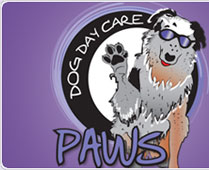Dog Daycare Temperament Test
![]() Understanding the Dog Daycare Temperament Test.
Understanding the Dog Daycare Temperament Test.
There some rules that you need follow if you want to successfully conduct dog daycare temperament tests. The first thing that you have to do is to be able to explain what a temperament test is to your potential client. If cannot explain to the client professionally and in detail what the temperament test entails then there is no way you can perform one. You must understand that potential clients generally will have no idea what is involved with the process, they only know that it is called a temperament test, this lack of knowledge concerning the testing procedure leads them to imagine you performing all sorts of oddities with their dog. You need to be able to quickly, and professionally explain the entire process from start to finish and put the clients mind at rest that you will be doing nothing out of the ordinary that will cause undue stress or injury to the animal.
![]() What is the Dog Daycare Temperament Test?
What is the Dog Daycare Temperament Test?
In short form it is this:
You are performing a series of planned exercises designed to assess the new dogs potential for aggressive behavior while determining the current level of social development to ensure that it is not aggressive and can play well with others, without posing a danger to itself or others. That’s it, that’s a temperament test explained in its simplest form.
You do not want to take in dogs that are aggressive, anti-social, or that would pose serious risk of injury to themselves ,the other dogs in your facility, or to your staff. You also want to insure that you do not take dogs that are so fear repressed or socially underdeveloped that they are unhappy or appear to be in terror while in the play areas. Dog Daycare is designed to be a fun experience for dogs and not all dogs will enjoy daycare, the inexperienced forcing of socially underdeveloped fearful dogs into the play areas for the sake of generating revenue only serves to reinforce their already fearful nature and elevate their potential for negative behavior. I am not sure what your level of morality is but I personally would feel horrible if a fearful dog was made worse by attending our services and manifested that negativity in the form of biting someone or worse yet, a child at some point outside of your facility when they reached down to pet or play with the dog. Also due to the litigious, overly regulated and knee jerk nature of our society could lead to the animal being destroyed. Basically, what I am trying to say here is that if you are not a qualified canine behaviorist, don't pretend to be one and don't let your good intentions of helping the animal overshadow your judgment. Although your heart may be in the right place, you may not have the experience to properly provide the one on one structured training regimen that the dog needs to develop socially and cast off it's fearful anti-social nature. Kindly recommend the client to a qualified behaviorist and move on.
The other problem with taking in fearful dogs is that customers will pick up on them in a second and will comment not on the 20 happy dogs in your facility but the one terrified one in the corner. Dog Daycare can be a tremendously stressful and scary experience for certain dogs that were not given the opportunity to socialize and learn pack interaction as a puppy. Although they may not be aggressive and may pose little risk in the way of attacking another dog or a member of your staff they are still bad for business as they present a negative image to potential clients touring your facility.
![]() Conducting the Pre Temperament Test Client Interview
Conducting the Pre Temperament Test Client Interview
Initially your clients should arrive on the day of their temperament test with all the applications and waivers complete and an up to date record of vaccinations. For the interview portion you need to sit down with the client and their dog in the lobby and briefly touch on information that they have provided you in your dog daycare application package, talk about the dogs likes and dislikes, and any other relevant information that you see in the package. If you have a good daycare application package your potential client should have spent a minimum of 10 minutes filling out all the information that it requests, ensure that you read it. If a client spends their precious time filling out your package, justify that effort by reviewing it with them, not just throwing it on a desk to file away later.
Check to insure that the shot records are current and up to date, and generally make small talk to make the client feel at ease about the situation. A lot of potential clients, even though they desire your service, will feel a bit embarrassed about taking a dog to daycare; they may get razzed by their friends, feel as though they are unnecessarily spoiling their dog, or in the event that the dog has serious separation anxiety that they did something wrong when the dog was a puppy that led to it. Ensure them that this is not the case and explain the benefits of dog daycare, that dogs like people have different personalities and different attention needs, also insure that you explain that there is no such thing as a spoiled dog, just well loved ones.
Always ensure that you conduct the temperament test with the owner not present. I’m sure that I will get a lot of criticism on this, but it is the absolute easiest way to conduct business and gives you a much better assessment of what the dog’s social skills are. The owner is not going to be present while their dog is in Daycare, so why would you want them present while you’re trying to set up the Daycare Simulation for the new dog? If the owners stay you will find that the dog spends most of it’s time staring at them or interacting with them, and that the owners will spend the majority of their time trying to convince their dog to interact with you. It provides an unneeded distraction and makes you look unprofessional and it lends your temperament testing methods to close scrutiny.
![]() Conducting the Dog Daycare Temperament Test.
Conducting the Dog Daycare Temperament Test.
The way that I and many other facilities conduct temperament tests is as follows.
Have the owner drop their dog off in the morning as you would any other daycare client and offer the first day of daycare free with the temperament test. Although you are losing money here, you may be gaining a client that will pay you many times over if you provide a quality service. Also keep in mind that the majority of your clients believe their dog will pass and no one will bring you a dog if they believe it will fail; people don’t generally indulge the idea of throwing money out the window.
The single most important item that you need to conduct a temperament test is “stock dogs or facility dogs.” These are dogs that you know, trust and can control at the drop of a hat. Preferably your own dogs or well behaved rescue dogs, they need to be mild mannered, non retaliatory, well socialized and generally middle of the road. Try not to use another customer’s dog to conduct a temperament tests, as no one likes the idea of their dog being used as a guinea pig to test the potential aggressiveness of a new dog.
Now place the dog in a secure area, a temperament testing area, a kennel, or an empty play area. Ideally in your designing and research you should have created a small room to conduct temperament tests. First and keeping the new dog on a strong leash, give the dog the opportunity to meet each staff member that will be interacting with the dog on a daily basis, have them greet the dog, and give some affection, observing for fearful or aggressive behaviors toward your staff.
Once this is complete you are all set retrieve one of the aforementioned stock dogs, preferably a very mild mannered and non retaliatory female in the event that a fight does erupt you want to ensure that you have complete control over one of the dogs, aka the (stock dog). Ensure that you keep the dog you are testing on a leash or strong lead to insure that you can maintain control at all times slowly let the two sniff each other and watch how they interact. Observe for threatening body language, or posturing, and if no negative behaviors present themselves go ahead and unleash the new dog being mindful to stay on top of the action. If all goes well and they interact socially, bring a toy into the equation and play with them at the same time, then give them a treat. You are checking for toy aggression and food possessive/aggressive tendencies. The last thing that you want is a riot when you have 15-20 dogs in a small area, so take the screening process seriously, observe them for a minimum of 10 minutes. If all is going well, bring in another stock dog and repeat the routine. Repeat the process of introducing new dogs a few more times introducing different stock dogs and watching how the new dog interacts with this small pack taking time to observe each new dogs introduction for a minimum of ten minutes. You should see play behavior, or even casual disinterest by the new dog after he becomes accustomed to the situation. These are the behaviors that you want to see. This process should take a minimum of 30-45 minutes if done correctly.
At this time it is more than likely safe to introduce the new dog to the main pack, which is a fairly easy process and one that does not need a lot of fanfare. Place the leash back on the new dog and return the stock dogs to their respective play areas. Walk the new dog on leash into the play area, being mindful to ensure that you have control over the pack and that they do not over whelm the new guy. There will be a lot of sniffs, and wags, and possibly a little posturing from some of the senior members of the pack but keep control and issue corrections if you feel someone is being a little too pushy. You need to insure that you maintain a mindset of total control over the pack during this time, and insure that all the dogs know the new dog is with you, that you control the situation, and that the new dog is a welcome member of the pack.
After 5 to 10 minutes the initial excitement will die down and the play group will return to normal and the new guy will be just another dog to the pack. The pack will then return to its normal activities, this is the point when it is more than likely safe to let the new dog off leash to roam amongst the pack. What you need to do now that the new dog is off leash and free roaming the play area is to shadow him closely for a few more minutes. He or she will more than likely bolt around the room introducing himself or herself one more time to the other dogs. Some of your senior pack members may not enjoy this up close an personal introduction and can react negatively if you are not on top of the situation and able to control the new dogs enthusiasm and the senior dogs reactions. Again after 5 minutes or so the excitement will die down and the pack will return to its normal activities. Congratulations you have just added a paying customer to your client list.
Purchase the entire 217 page Dog Daycare Start Up Manual
(Instant download upon checkout)
$24.99
All products are available for instant download upon checkout
No products are shipped or otherwise available in hardcopy or paperback form




